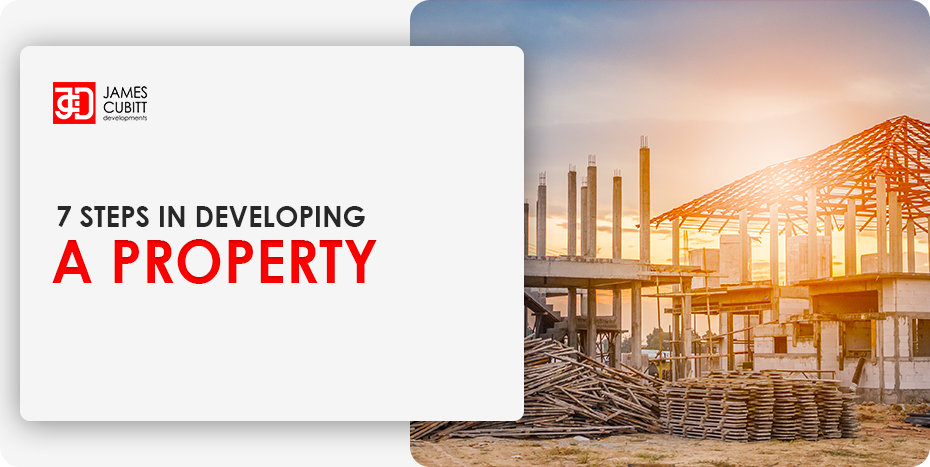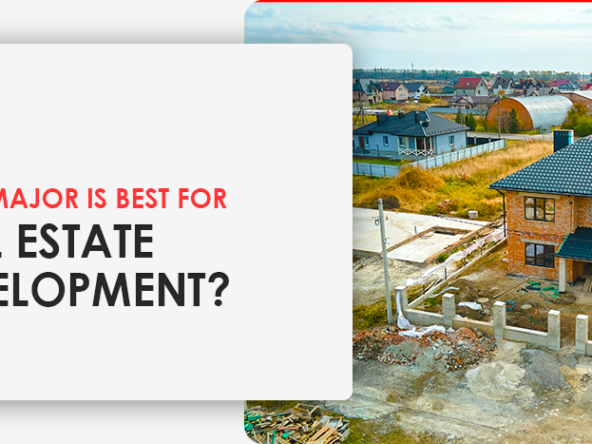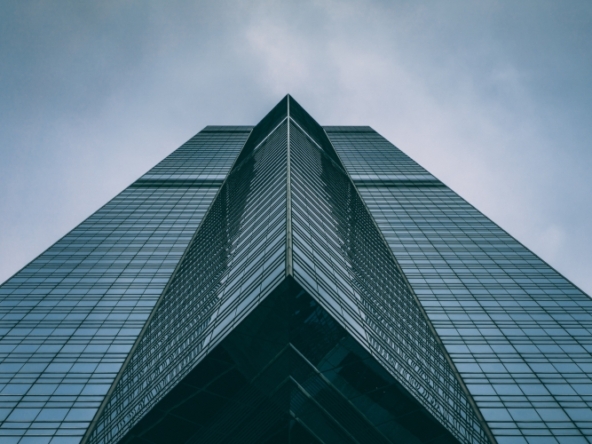7 Different Types of Real Estate Development
There are various types of real estate development sites where you can have your development project, each with its advantages and disadvantages. You must find out what type of real estate development site you have before you start building.
These days, it is not just enough to know that there are processes involved in developing a property; you also need to know the different types of development sites so you know if the site you have is suitable for the building project you want to develop.
Types of Real Estate Development
- Brownfield
- Greenfield
- Sub-division
- Industrial
- Residential
- Commercial
- Repositioning and redevelopment
- Brownfield
Brownfield sites are development sites that have previously been used for industrial or commercial purposes. But generally speaking, they are previously developed land that is or was occupied by a permanent structure.
These development sites are located in urban areas and are typically found in existing towns or cities. To build on a brownfield site, the process involved is redevelopment. Brownfield developments are buildings developed on brownfield sites.
This type of real estate development site is called brownfield because of the fact that the land may be contaminated by the previous activities that have taken place on the site. One way to identify this development site is the lack of vegetation on the property. This is usually a side effect as a result of the prior activities on the property.
Some examples of brownfield sites are abandoned factories, landfills, dry cleaning establishments, and gas stations.
Advantages
- Low Development Costs
The fact that the infrastructure needed for the new development already exists since most brownfield areas are located in towns or cities is what makes the development costs low.
- Quick turn around time
Also, because of the necessary infrastructure already in place, planning permission may not be required, which is assuming the purpose of the site does not change with the new development. Developers can begin work immediately.
- Economically and politically advantageous
Brownfield sites present opportunities to improve the local landscape of a street or community. Since brownfield sites are no longer considered suitable for their previous use, the alternative use for these sites is usually desirable for both residents, the government, and investors/developers.
Disadvantages
- Operation Challenges
When developing a brownfield site, developers may face traffic congestion and noise. This is because brownfield sites are located in urban areas.
- Environmental issues
Most brownfield sites are polluted and need a proper clean-up before any development can start on them. It can be very expensive for developers to clean up if they must comply with “today’s” environmental standards and clean-up rules.
- Development constraints
Developers are usually confronted with various development constraints while building. And this is because brownfield developments are based on previous establishments.
- Greenfield
Unlike brownfield development sites, which have pre-existing structures on them, greenfield development sites are quite the opposite. Greenfield development sites are undeveloped land or vacant sites in a city or rural area that are either used for agriculture or landscape design.
Other examples of greenfield development sites are unfenced open fields, urban lots, or restricted closed properties that are off-limits to the general public.
Advantages
- Maximum flexibility
With greenfield development sites, you enjoy flexibility when developing your project because it is vacant land. This type of real estate development lacks the constraints that one encounters with brownfield sites. You can build just about any design you want on it.
- Continued development
Greenfield developments contribute to the development of a city section.
- Simple environmental regulations
When compared to brownfield development sites, environmental regulations are simple to follow.
Disadvantages
- Long turnaround time
Government agencies may take a long time to give approvals and planning permission. As a result, the development process may be delayed.
- High Development Costs
Since greenfield developments are ground-up developments and you are required to build from scratch, the development cost is usually high.
- Subdivision
A subdivision is a type of real estate development site that can be divided into smaller pieces or lots to be developed and sold separately. Hence, buildings built on them are called subdivision developments.
To go into building subdivision developments, a developer acquires several tracts of land and legally divides them up into several lots to sell or be developed, depending on the local building permit and zoning laws.
Advantages
- Faster profit creation
Sub-division development sites are types of real estate development that can bring developers a fast return. When a developer buys a piece of land at a wholesale price, divides it up and sells maybe two or more portions of the whole at a higher per square metre price, he can make a tidy profit from them.
- Capital appreciation
As lots are being developed on different portions of the acquired land, the value of the land increases. Of course, this means that only the early buyers have it at relatively cheaper rates. One result of capital appreciation is a higher purchase price.
- Reduced costs and benefits
Developers don’t necessarily need to bear the burden of building; they can pass it on to buyers.
Developers can sell these lots with the building approvals and necessary certificates, and the buyers can take up the responsibility of erecting the structure once they have acquired the property for themselves.
Disadvantages
Increased Risk
With subdivision developments, there is usually a high risk that the developer’s expected return based on the property acquired may not be achieved.
Potential Surprised costs
If a land structure problem occurs, there most definitely will be an unplanned additional cost. Hence, developers should do their due diligence with their feasibility studies before committing.
- 4. Industrial
Industrial development sites are sites used for manufacturing and production. They are sites appropriate for developing buildings for industrial activities such as production, manufacturing, assembling, warehousing, research, storage, and distribution. This means that such a development site belongs to the industrial zone.
Advantages
- Industrial development sites are typically less costly.
- Because industrial structures do not require much construction, an open-air factory may suffice. The construction cost is not as high as developing a commercial or residential building.
Disadvantages
- The building project may progress slowly because industries require a sophisticated and protected environment for their operations. So the necessary peculiarities put into consideration make construction slow.
- There may be cleanup costs associated with industrial development sites, which may raise the construction cost.
- Most often, a developer must find a client and build to their specifications.
- Residential
The residential development sites are strictly for residential buildings where people live. It is usually private land acquired by a developer to build structures such as houses, apartments, or complexes that would provide living accommodations for one or more people.
Advantages
- Necessity
Developers enjoy the benefit of necessity with residental developements. A home is a general and basic need for everyone.
- Residential buildings are easier to sell when compared to other developments.
- Consistent tenant income ensures a steady cash flow.
Disadvantages
- Expensive construction costs and stagnating sales if residential buildings are developed at the wrong time or in the wrong place.
- Commercial
Commercial development sites are sites for buildings that house businesses or land developed for profit, either through capital gain or rental income.
A developer/investor owns a commercial building and collects rent or leases from each business that operates within it to make a profit.
Advantages
- Frequently higher earning potential
The rent per square foot of commercial space is usually higher when compared to the rent for an apartment.
- Reduced vacancy risk
Commercial real estate is often divided into smaller units for rental or lease purposes, so the vacancy risk is evenly distributed across the multiple units.
- Less competition
Commercial real estate has less competition because commercial real estate projects often require more capital. As such, fewer developers are venturing into the development of commercial spaces.
- Consistent tenant income ensures a steady cash flow
Disadvantages
- Management problem
Developers must find a way to manage multiple leases typical of this type of real estate development. Maintenance and public safety concerns are also some management issues he should look into.
Higher initial investment
Commercial development sites are frequently purchased years before construction begins.
The holding costs for commercial development sites are high.
- Redevelopment and rebranding
- Repositioning and redevelopment projects are types of real estate development that can provide numerous benefits that new developments do not. Every project is unique, but here are some of the advantages of repurposing an existing structure to create something new and better.
Advantages
Using an existing structure can save money on construction costs.
- Renovation and redevelopment can be finished much faster.
- The value and elements of heritage and history can be preserved.
- The possibility of larger floor plans
- Existing structures’ distinctive features and stories can be preserved.
- Enhanced community value
- Renovation can increase the value of surrounding property.
- Redeveloped properties can help to increase the price per square meter.
Disadvantages
- To repurpose an existing building, you need approval, which can be time-consuming and onerous.
- Structural improvements can be costly.
Due to desired floor plans, some areas of the building may be inaccessible.
- Many elements may need to be added to meet today’s building codes, which are much stricter than they were decades ago.
Heating, cooling, and sewage piping can be very expensive to install, both internally and externally.
- Access/entry may conflict with the site’s new business model.
- Push back on complaints from neighbours, which cause delays, and they can complain about pretty much anything.
Developing a property does not happen on autopilot. There are important things one must do to get it right. Things like learning about real estate development and how to become a real estate developer, if you are just starting. Or learning about the real estate development process so you are prepared and aware of what is expected when building a property.
Once you have that out of the way, your understanding of the different types of real estate development comes next. Your knowledge will guide you in determining how to proceed with your building plan.
CONCLUSION
James Cubitt Developments (JCD) is a leading real estate development company that you can trust to help you improve your pieces of real estate to increase their value and meet your space needs.
Whether you are looking to build new structures or modify your existing ones, we bring our experience and expertise to work to help you create a satisfactory project. Let’s help you convert your building ideas to real property.
For more information
Phone number: +234 1 715 9995, +234 1 715 9996
Email: info@jamescubittdevelopments.com




